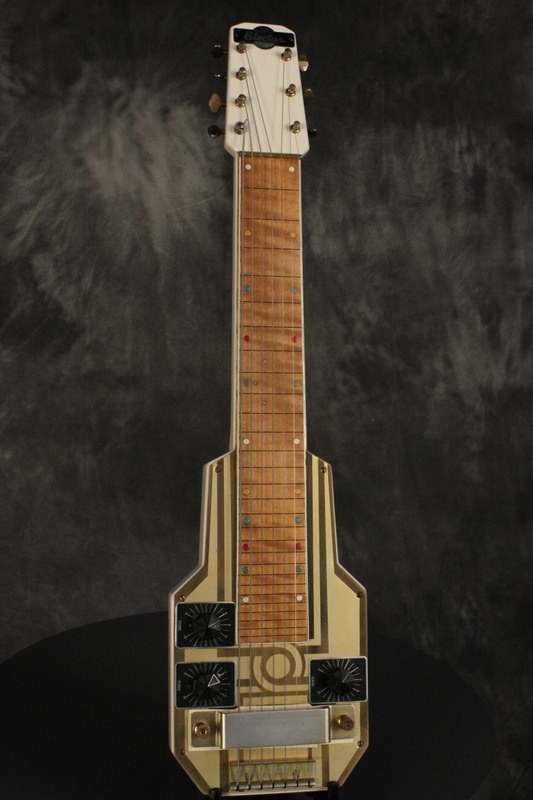
Close-up #13: 1938 Model M Hawaiian
SN 2089
These stunning photographs of a stunning lap steel guitar I found a couple of years ago somewhere on the web.
In 1935 Epiphone launched a line of electric instruments branded "Electar" – short for "Electric guitar". In 1936 the electric Hawaiian "Model M" was introduced which sported a distinctive art deco design with skyscraper-style stepped body shape. Below how the model appeared in the Electar catalog dated 1937 – described as having a "jet black body with rigid metal top for added brilliance and sustaining qualities".
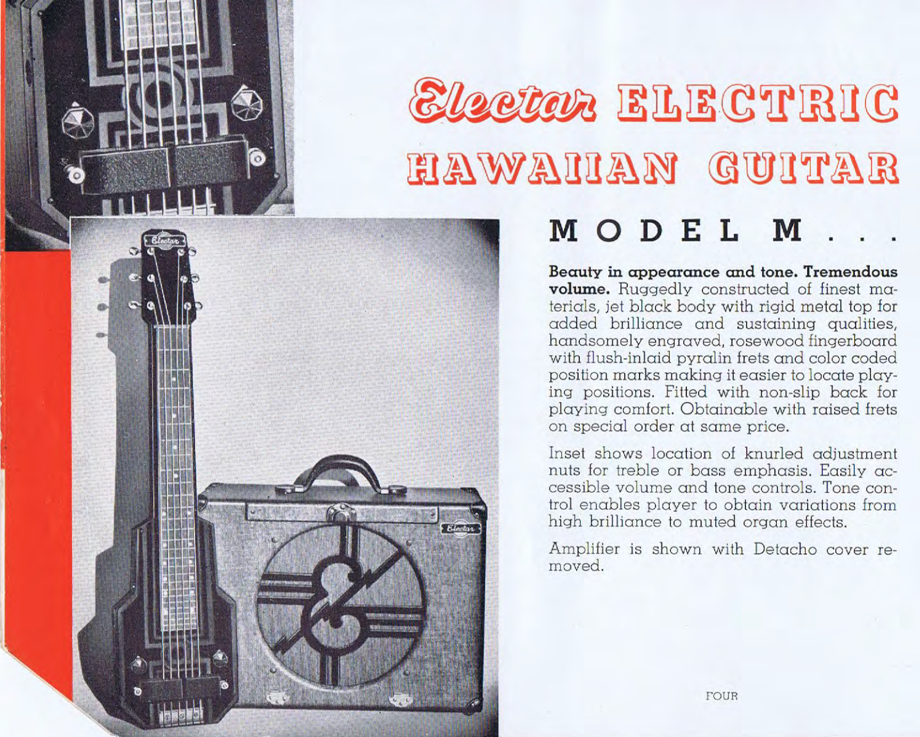
On June 12, 1937, Epi A. Stathopoulo filed a patent for this design which was granted on July 20, 1937.
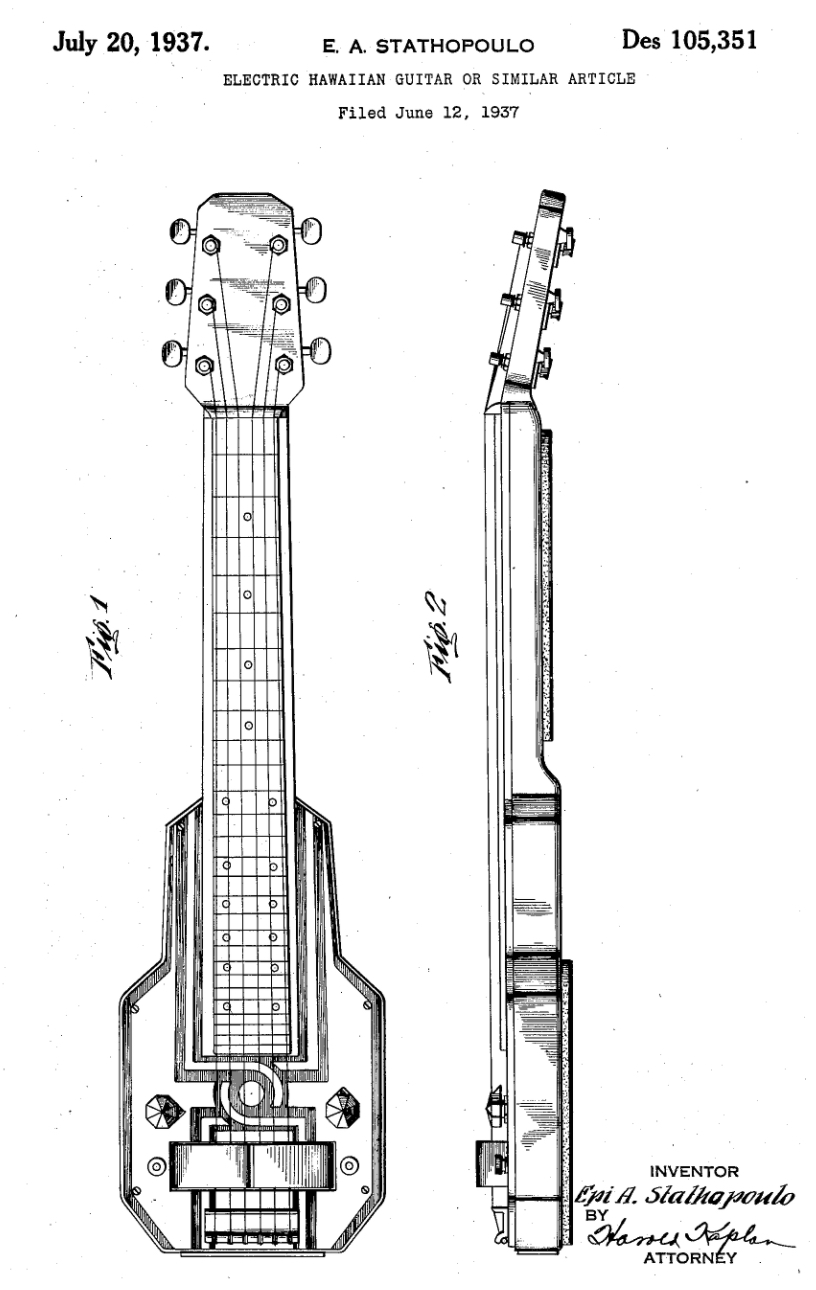
This 1938 example has the serial number "2089" stamped on the top edge of the headstock – typical for Electar instruments before 1939: When Epiphone's "Spanish" guitars changed to a center-dip headstock shape, the SN stamp was generally moved to the back of the headstock, and the "Electar" logo plate replaced by the Epiphone logo plate colloqually referred to as "bikini" logo (guess why...).
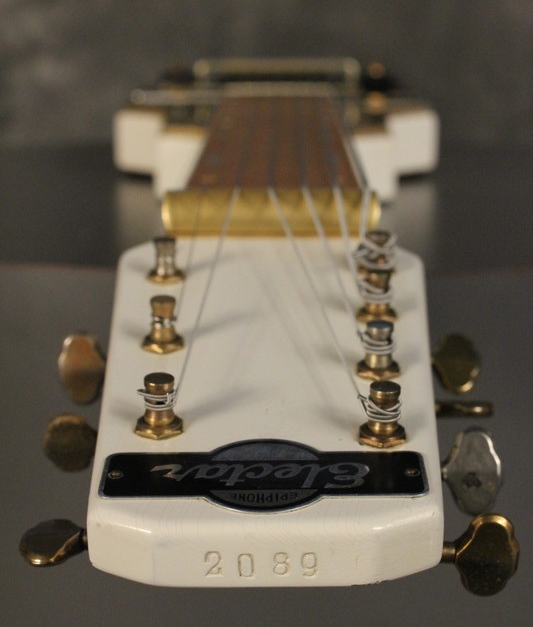
While the vast majority of Model M Hawaiian are black as per catalog specs, a handful of examples have surfaced which have this white body and fancy golden top – a plate of anodized aluminum with an etched art deco pattern. Other aluminum parts such as nut, handrest and bridge unit also appear to be anodized to a golden color. Note the attractively flamed maple fretboard (instead of the plain rosewood of black Model M examples).
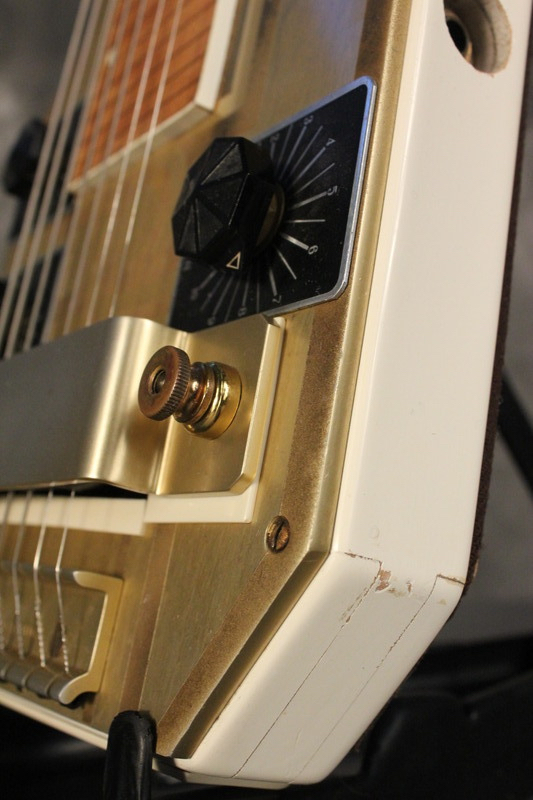
The Model M Hawaiian was available in configurations with 6, 7 or 8 strings – this one has 7.
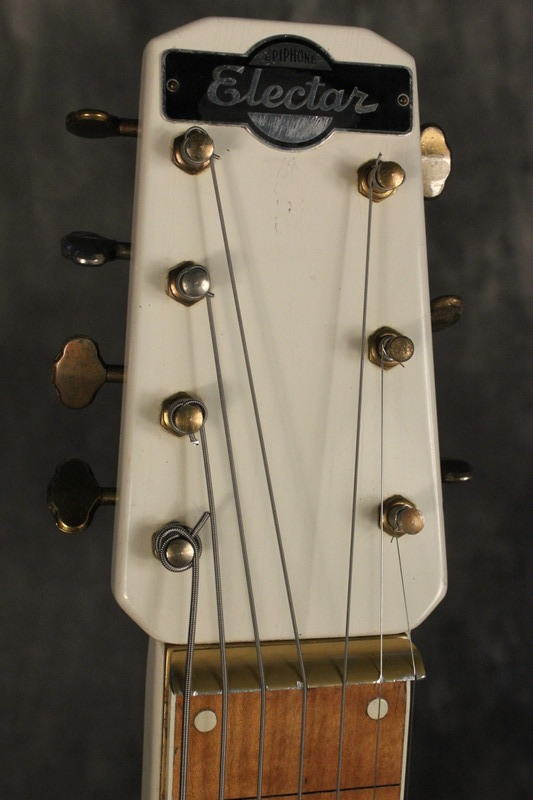
The tuners are Grover G-98 with scalloped buttons – although these examples appear to be later, post-WW2 versions. Note that some of the tuner plates appear to have their points clipped – to fit 4 onto the headstock.
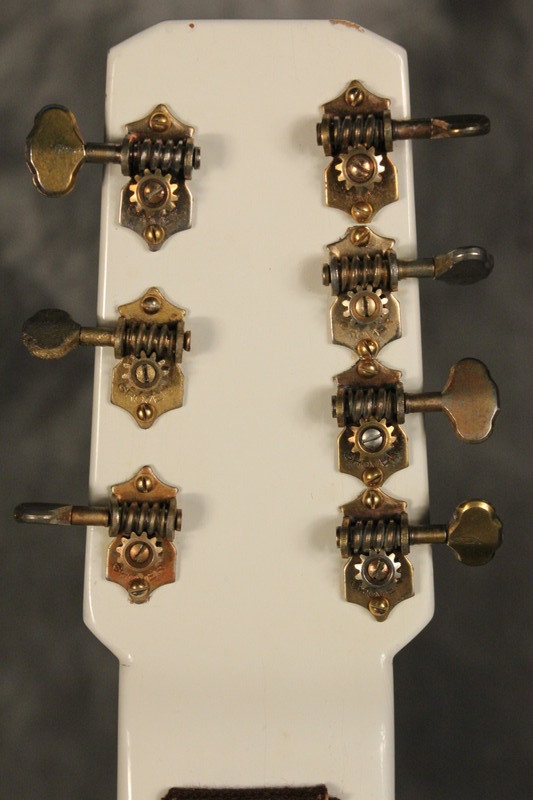
There are cloth pads on the back to prevent the instrument slipping off the player's lap.
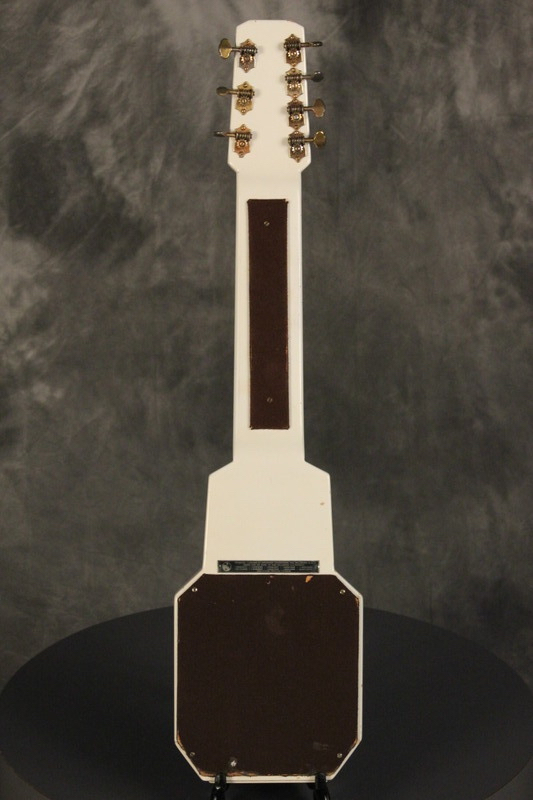
The electronics are accessible by removing the large back pad.
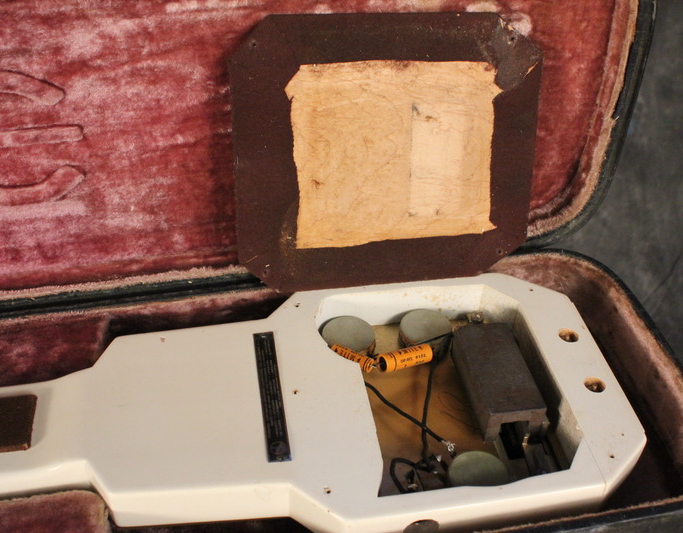
In 1937-38, the model M sported a 3rd tone control pot named "Rhythm Control": It worked basically as a bass roll-off, in addition to the common treble roll-off and volume control. Note the Miessner patents plate which Epiphone attached to all pre-WW2 electrics.
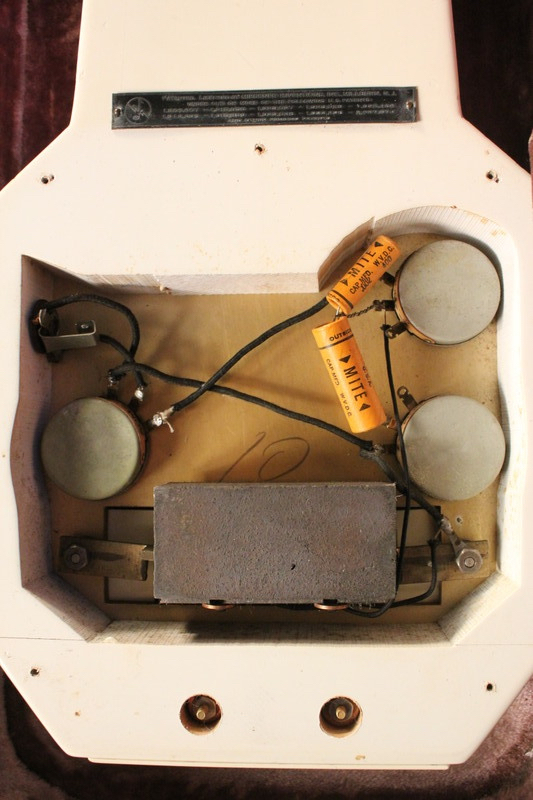
The "TruBalance" pickup (renamed "Master" pickup in 1939) with adjustable pole screws, invented by ingenious Epiphone employee Herb Sunshine. This innovative pickup replaced the earlier horseshoe pickup.
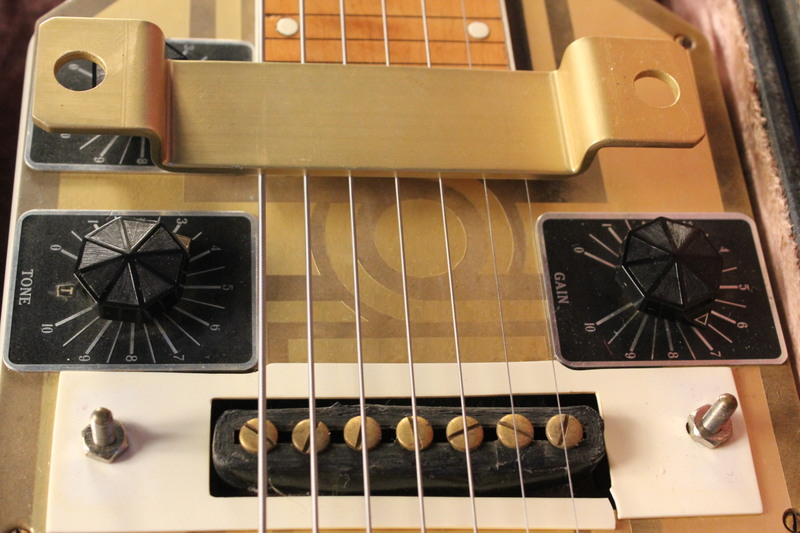
Herbert S. Sunshine's patent application for this pickup was filed on November 10, 1937, and granted almost two years later.
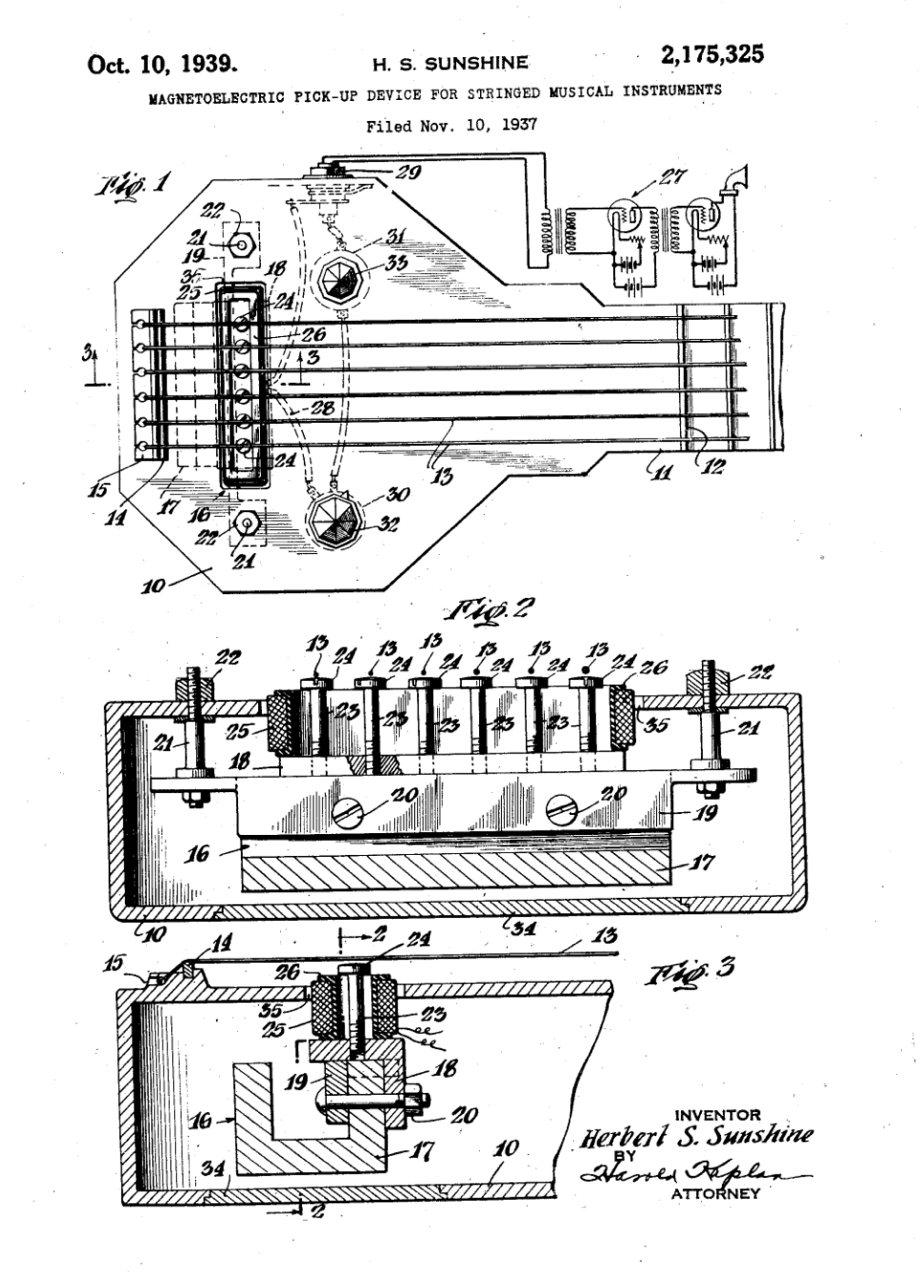
In the 1937 Electar catalog, Herb Sunshine is pictured in the smaller photo on the right.
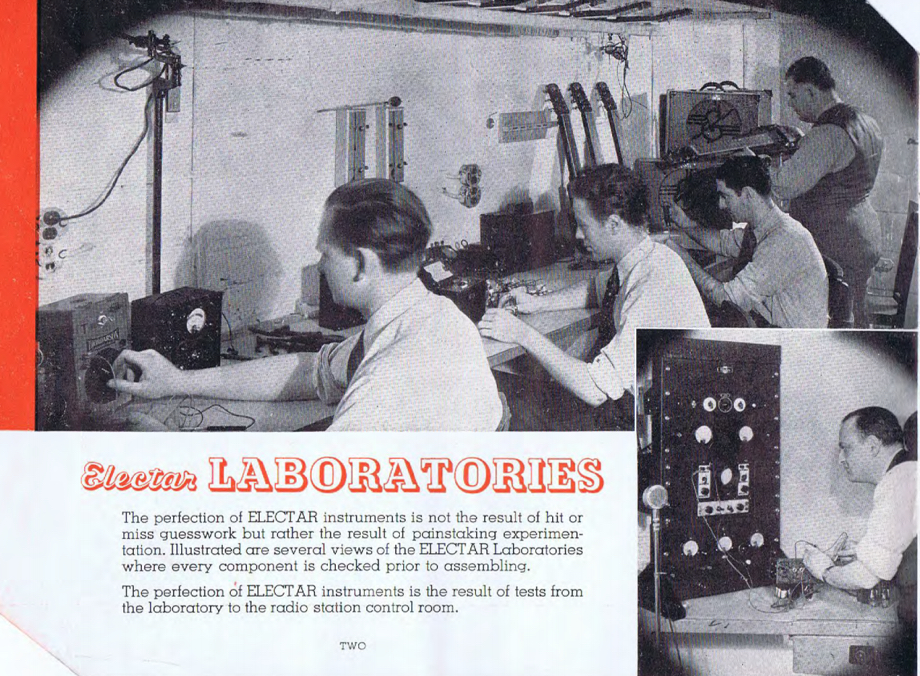
The "gain" and "tone" dial plates were possibly a later addition – other examples don't show these, and I actually found some pics of the same instrument without dials, see below (together with another uncommon version of the Model M Hawaiian, a late example with grey body and blue top).
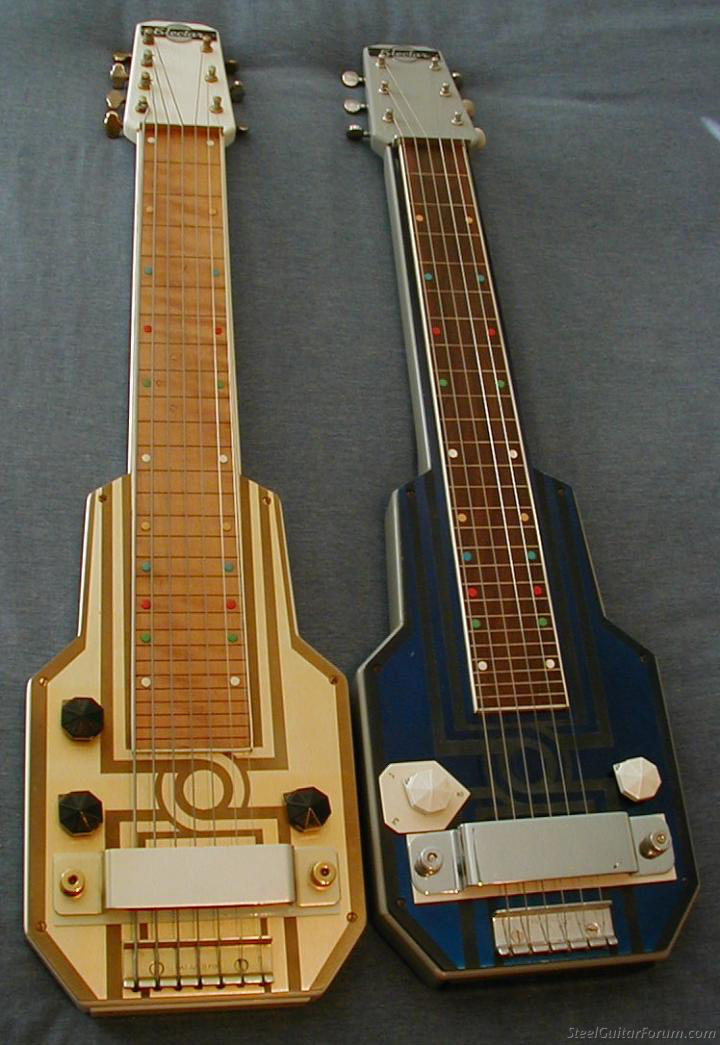
This golden Model M has a very nice case which however appears slightly too large for its body size. These cases with "E" logo embossed in the lining of the lid were first introduced and promoted in the 1939 catalog.
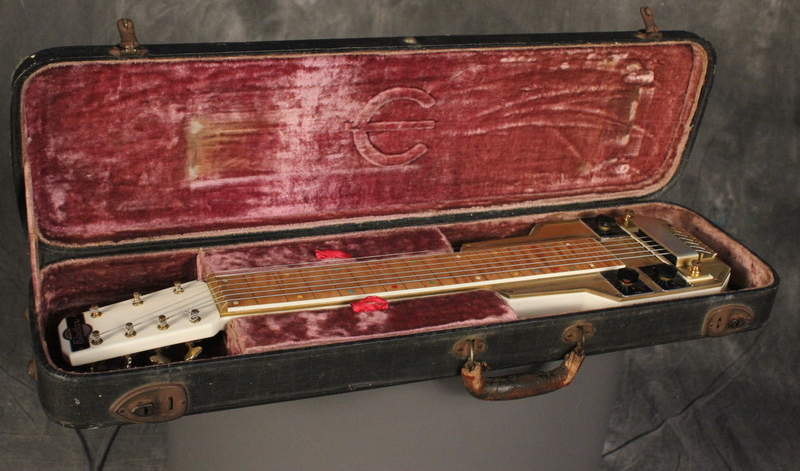
By 1939 the Model M Hawaiian was replaced by the Zephyr Hawaiian model which had a similar stepped body shape, with a plain white pyralin top. Possibly this case is a somewhat later model designed for a Zephyr Hawaiian.
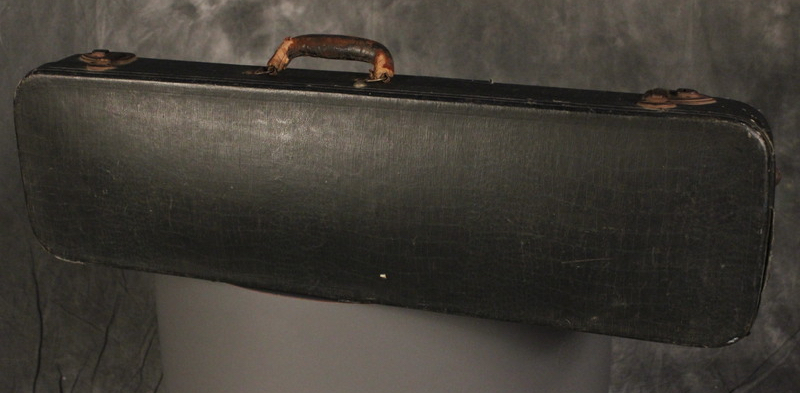
(Oct 29, 2016)